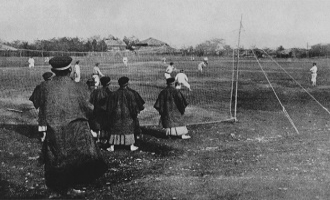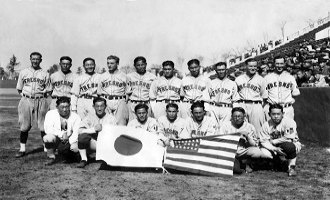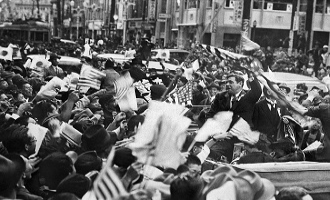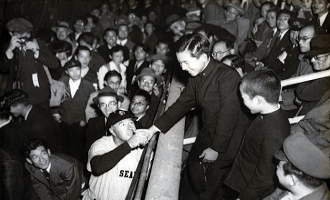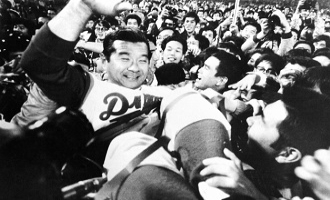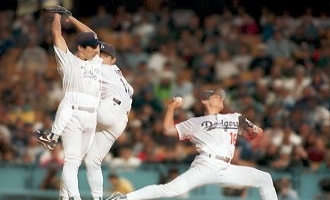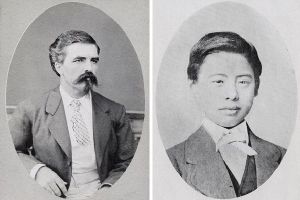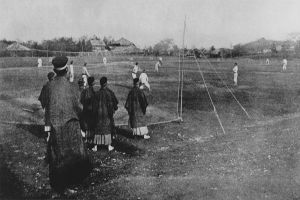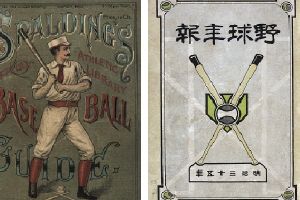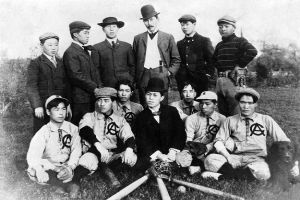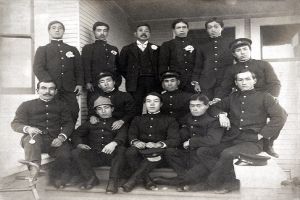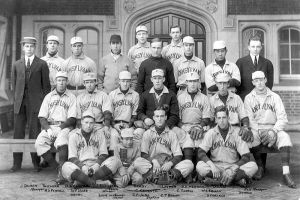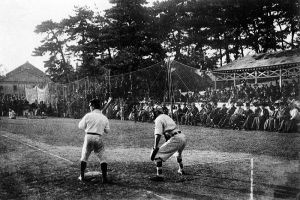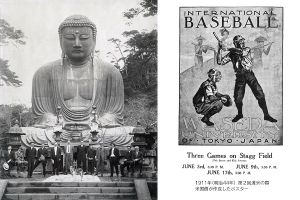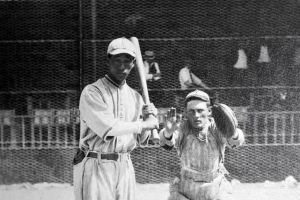Learning the Game
野球の伝来
After 250 years of Japan’s self-imposed diplomatic isolation, baseball reached its shores on the waves of Westernization that swept across the nation in the 1870s. Beginning with Horace Wilson, young American oyatoi, foreigners hired by the Meiji government, introduced the team sport to Japanese youth.
In the 1880s, Japan’s overseas labor migration began in earnest, and this stream of individuals, along with their love of baseball, traversed the Pacific. Settling in Hawaii and along the West Coast, these Japanese immigrants and their children formed town baseball teams, just like their American neighbors. Businessmen, engineers, and study-abroad students, such as Hiraoka Hiroshi, also brought back from the United States knowledge, techniques, and equipment for playing the game.
With the opening of regular transpacific maritime routes, baseball exchange between the United States and Japan increased in the 1900s and 1910s. Among those who formed this expanding sporting fraternity were U.S. Navy teams, American expatriates living in Japan, and both American and Japanese collegiate squads. Waseda’s Suishū Tobita managed his squad with an intensity that was soon adopted by other coaches and defined Japanese baseball. By the turn of the century, the vernacular word for baseball, yakyu, was coined and became part of the Japanese lexicon, symbolizing the indigenization of this American cultural practice.
野球の伝来
野球が日本に伝来したのは、1870年代のことです。250年におよぶ鎖国政策が終わりを告げ、日本に押し寄せた西洋化の波と共にやってきました。このチームスポーツを日本に紹介したのは、明治政府が雇用した「お雇い外国人」の米国人青年、ホーレス・ウィルソンでした。
1880年代になると、日本人労働者の海外移住が本格的になり、人々は、野球愛と共に、太平洋を渡っていきました。ハワイや西海岸に定住した日本人移民たちは、近所の米国人と同じように、子供たちと一緒に草野球チームを作りました。一方、野球に関する知識や技術、道具などは、平岡煕をはじめとした、米国に留学した学生や技師、ビジネスマンたちが、米国から日本へと持ち帰りました。
日米の野球交流は、太平洋横断の定期航路の開設とともに、1900年から1910年代にかけ活発となりました。この盛り上がる野球熱を作り出したのは、米国海軍、日本在住の米国人駐在員、および日米の大学がそれぞれ結成した野球チームでした。早稲田大学野球部の監督を務めた飛田穂洲は、選手の育成に熱心に取り組み、その熱心な指導スタイルは、瞬く間に他の指導者にも採用され、日本式野球の確立に至りました。世紀の変わり目には、「野球」と言う日本語訳が作られ、日本語の語彙の一部となり、米国発祥の文化が現地化された象徴となりました。
